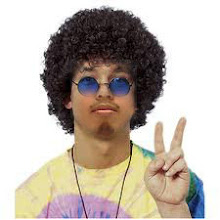Bola Adidas mula digunakan pada acara rasmi Piala Dunya 1970 di Mexico. Sejak itu Adidas menjadi pembekal rasmi bola bagi Piala Dunya. Bagaimanapun,evolusi bola sepak ini menjadi satu rungutan pada pemain bola khasnya pada edisi PD di Afrika Selatan. Kebanyakannya mengatakan bola ini sukar dijangka 'perangainya' itu. Apakah nama bola itu? Baca di bawah ini.(Kredit to http://wclegends.com/the-balls/)
Bola kegemaran penulis...Telstar. Memang klasik.Bola klasik ini boleh di cari di kedai2 berhampiran atau cari di Mudah.my
The Balls
10
July
July
I don’t want to bore anyone but seeing as the whole point of this project is to get the balls signed, it’s probably fair that I tell you a little about them, their history and all that. Actually, there’s plenty of sites out there where some seriously clued up people can tell you all about the balls. So I’ll start off by sharing what I know (including official Adidas promo blurb) and if you want to know more you can find out more about them using the links at the bottom. It all started in 1970 when Adidas became the official ball supplier to the FIFA World Cup!
1970 Mexico: Adidas Telstar
Like all other balls in its time, the adidas Telstar was completely made of leather; however, unlike any other ball it featured 32 hand-stitched panels (12 black pentagons and 20 white hexagons), creating the roundest sphere of its time.
The revolutionary design of Telstar wrote football history: it was the first white football ever to be decorated with black pentagons. Mexico 1970 was the first live televised FIFA World Cup and the revolutionary design of Telstar – the name derives from “Star of Television” – made the ball far more visible on black and white television. Until this day, the adidas Telstar remains the archetype of all generic footballs.
1974 West Germany: Adidas Telstar Durlast
Telstar made a repeat appearance with new black branding replacing the previously gold branding used on the 1970 match ball.
1978 Argentina: Adidas Tango River Plate
In 1978 football design experienced another revolution with the introduction of the adidas Tango. Once again adidas had created what would become a ‘football design classic’. Twenty panels with ‘triads’ created an optical impression of 12 identical circles. For the following five FIFA World Cup tournaments the Match Ball design was to be based on this design. Tango featured improved weather resistance qualities, and took its inspiration from the deep passion, emotion and elegance of Argentina.
1982 Spain: Adidas Tango Espana
The initial Tango design from 1978 was only altered slightly in 1982. However, the Tango España did feature a major technological innovation. The Tango España, still made of leather, featured revolutionary waterproof sealed seams.
1986 Mexico: Adidas Azteca
The Match Ball for the 1986 FIFA World Cup revolutionized footballs and football production techniques.
The adidas Azteca was the first ever synthetic FIFA World Cup Match Ball. The use of synthetic material increased its durability and further minimized water absorption. With its never-before-achieved performance on hard ground, at high altitude, and in wet conditions, Azteca represented a massive leap forward for the game.
Its elegantly and elaborately decorated design was inspired by the hosting nation’s native Aztec architecture and murals.
1990 Italy: Adidas Etrusco Unico
The adidas Etrusco Unico evolved the use of synthetic materials further, creating the first ever Match Ball containing an internal layer of black polyurethane foam, making Etrusco Unico fully water-resistant, more lively and faster than ever. The name and intricate design took their inspiration from Italy’s magnificent, ancient history and the contributions and fine art of the Etruscans. Three Etruscan lion heads decorate each of the 20 Tango triads.
1994 USA: Adidas Questra
In 1994 adidas introduced the first Match Ball featuring a high-tech, ultra-high-energy-return layer of white polyethylene foam. This PE layer made Questra softer to the touch (more controllable) and much faster off the foot for more speed. Inspired by space technology, high velocity rockets and America’s “quest for the stars”, Questra set new performance standards.
1998 France: Adidas Tricolore
Adidas Tricolore was the first ever multi-colored Match Ball. France’s flag and national colors (the Tricolore) and the “cockerel” the traditional symbol of the French nation and Football Federation, inspired the ball’s name and design.
Moreover, the adidas Tricolore featured an advanced “syntactic foam” layer – a tight regular matrix, composed of gas-filled, individually closed and highly durable micro balloons. The syntactic foam further improved the ball’s durability, energy return and made it more responsive.
2002 Japan & South Korea: Adidas Fevernova
The adidas Fevernova was the first World Cup Match Ball since 1978 to break with the traditional Tango design. The colorful and revolutionary look and color usage was entirely based on Asian culture. The Fevernova featured a refined syntactic foam layer to give the ball superior performance characteristics and a three-layer, knitted chassis, allowing for a more precise and predictable flight path every time.
2006 Germany: Adidas Teamgeist
The +Teamgeist ball differs from previous balls in having just 14 curved panels, rather than the 32 that have been standard since 1970. In another first, the panels are bonded together, rather than stitched.
2010 South Africa: Adidas Jabulani
2014 Brazil: Adidas Brazuca (still waiting for this one!)
Posted in:











0 comments:
Post a Comment